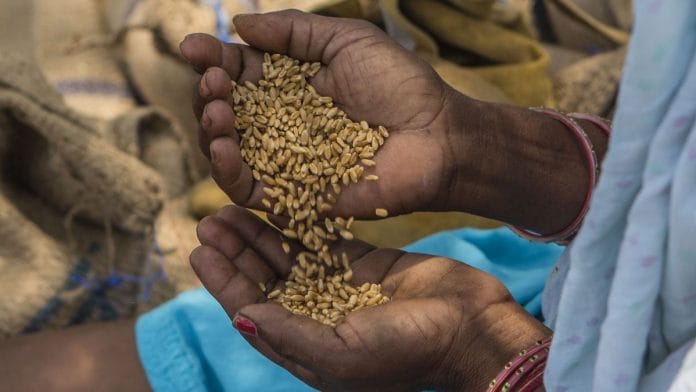New Delhi: Wheat jumped by the exchange limit after India’s move to restrict exports, exposing just how tight global supplies are after the war in Ukraine and threatening to drive up food prices even more.
The government will suspend overseas sales to manage its food security, according to a notification dated May 13. This drew criticism from the agriculture ministers of the Group of Seven nations, who said that such measures make the world’s crisis worse.
Benchmark futures rose as much as 5.9% to $12.47 1/2 a bushel in Chicago, the highest in two months. Prices have surged about 60% this year, increasing the cost of everything from bread to cakes and noodles.
The surprising thing is that India isn’t even a prominent exporter on the world stage. The fact that it could have such a major impact underscores the bleak prospect of global wheat supplies. War has crippled Ukraine’s exports, and now droughts, floods and heat waves threaten crops in most major producers.
“If this ban occurred in a normal year the impact would be minimal, but the loss of Ukraine volumes exacerbate the issues,” said Andrew Whitelaw, a grains analyst at Melbourne-based Thomas Elder Markets.
India’s decision to halt wheat exports came as a record-breaking heat wave parched the crop during a crucial period, spurring estimates of slumping yields. The output risk created a dilemma for India, which has tried to fill the gap as the shortfall in Ukraine’s exports push buyers toward alternative origins.
India prioritized the domestic market, even as the move risks tarnishing its international image as a reliable supplier. Prime Minister Narendra Modi faces frustration on home soil about surging inflation, an issue that brought down the previous government and paved the way for his ascension to power.
India will approve exports to countries that require wheat for food security needs and based on the requests of their governments. It will also allow shipments for which irrevocable letters of credit have been issued. Its supplies usually go to Bangladesh, Sri Lanka, the United Arab Emirates and Indonesia.
“Directing the wheat exports through government channels would not only ensure fulfilling the genuine needs of our neighbours and food-deficit countries, but also control inflationary expectations,” India’s food ministry said in a statement. It added that the country has adequate food stocks.
That view may be called into question. The government’s wheat procurement has halved and may not be enough to meet the needs of its subsidized food programs, according to Citigroup Inc. Farmers could have been more willing to sell to private players who offered a better price. Authorities have also cut the allocation of wheat and increased that of rice under its free food program.
“Even after making these adjustments, the government might not have enough wheat to meet its annual requirement,” Citi analysts said in a note. Based on India’s production estimate of 105 million tons, exports of 10 million or more as targeted by officials would be tough to achieve, according to the bank.
The move by India adds to a growing wave of food protectionism since the war started. Governments around the world are seeking to ensure local food supplies with agriculture prices surging. Indonesia has halted palm oil exports, while Serbia and Kazakhstan imposed quotas on grain shipments.
Traders are frustrated by the policy. A day before India’s export halt was announced, the government said it was sending trade delegations to countries to explore the possibility of boosting wheat exports. This will not happen now. The food ministry had also said it saw no need to control exports as Bloomberg News reported that authorities were considering the move.
“A lot of exporters and actual users worldwide have commitments of purchase of Indian wheat, which should be honored,” said Vijay Iyengar, chairman and managing director of Singapore-based Agrocorp International, which trades about 12 million tons of grain annually.
Global prices of different wheat varieties climbed. Hard red winter futures surged by 70 cents, the exchange limit, to $13.52 a bushel, the highest price since 2008, while spring wheat was up more than 4%. Corn increased 2.2%. —Bloomberg
Also Read: India faces flak for wheat export ban, experts fear move could trigger domino effect






